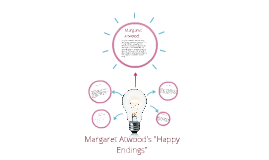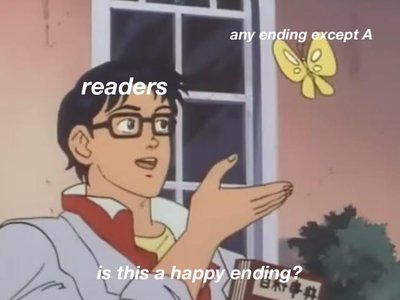

According to Atwood, “endings are the same however you slice it” (426), she demonstrated by giving us different plots each with their own conflicts, however all with their own “Happy Ending”.Įven after changing things up and even with death, Atwood showed that it is the happy ending at the end of the story that leaves the reader feeling, well happy.To learn how to write a poem step-by-step, let’s start where all poets start: the basics. In “F” is where Atwood reveals that no matter how you spin a story or what challenges you throw into it you will get a happy ending, even if it is not intentional, because they are all fake. In “E” both Fred and Madge die, however they both die of natural causes after they have lived an exciting life together. In this scenario even though they came close to death, they both survive and find happiness again. Even thousands of people drown in the tidal wave, Fred and Madge manage to escape, and rebuild their lives. In “D” we continue with Madge and Fred’s story and how they have a wonderful marriage, and life, however a tidal wave comes and wipes away most of their seashore community. In this scenario So even though there was no happy ending for Mary, John, or even James, Madge gets her happy ending, again appealing to the audiences need to optimism. After her husband’s death and a “suitable period of mourning” (425), Madge meets Fred and they get married and go on the have a life together as in “A”. One day John finds James and Mary in bed together, enraged John buys a gun and shoots James and Mary, before killing himself. Mary is love with a man her own age named James who sleeps with Mary, but is not willing to give up his freedom. In “C”, Atwood switches things around a bit, John is still married to Madge, however he is in love with a much younger Mary, who sleeps with him, not because she loves him, but because she feels bad for him. In this scenario Atwood creates a plot where we feel sorry for Mary, and even though she doesn’t get her happy ending, John and Madge get theirs. John and Madge get married and “everything continues as in A” (425). Once Mary finds out about Madge and faces the realization that John does not want to be with her, she kills herself. Madge is a woman that John has started seeing and unlike Mary, Madge gets the pleasure of being taken out to dinner with John, something he has never done for Mary. At this point Atwood introduces a third person, Madge. John, who is not interested in having anything more than a physical relationship with Mary, goes to Mary’s house two nights a week, which is when she cooks him dinner, and makes herself available to his sexual needs.

In this scenario we read about Mary’s longing to please John and be the perfect woman that John would want to fall in love with. In the second scenario “B”, Mary is in love with John, however John just uses Mary for sex. In this scenario Atwood appealed to the audience’s desire to read about happy things: happy people, happy about their jobs, happy about their family, happy about their lives. At the end of scenario they both die, however they both lived full, successful, happy lives. Not only do John and Mary have a happy marriage, they both have successful jobs in desirable fields, they are able to buy their dream house, and they are also blessed with “two children, to whom they are devoted” (424). This first scenario represents the over happy story, with a happy beginning, a happy ending, and a happy ending. In the first scenario “A”, “John and Mary fall in love and get married” (Atwood 242), and live happily ever after.

In each scenario we see a different situation, however each scenario build off of the one that comes before it. Instead of just writing one story with one plot, she writes six different stories, “A”-“F”, each with their own twist and ending. In “Happy Endings” Atwood introduces the two main characters, John and Mary. In other words, it typically doesn’t matter what the story is about, as long as it ends on a positive note, the reader is generally satisfied. Do “Happy Endings” really make for happy stories? In Margaret Atwood’s work “Happy Endings” she shows that what is in the body of the story does not hold much weight compared to the ending of the story.


 0 kommentar(er)
0 kommentar(er)
